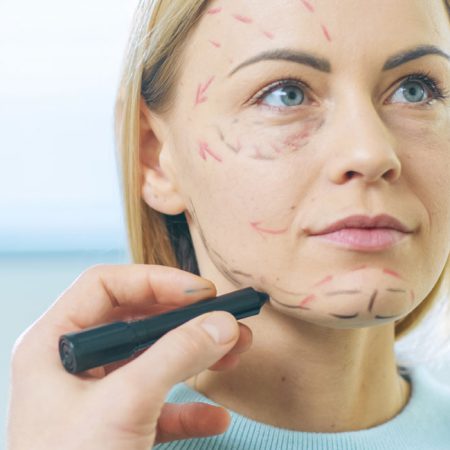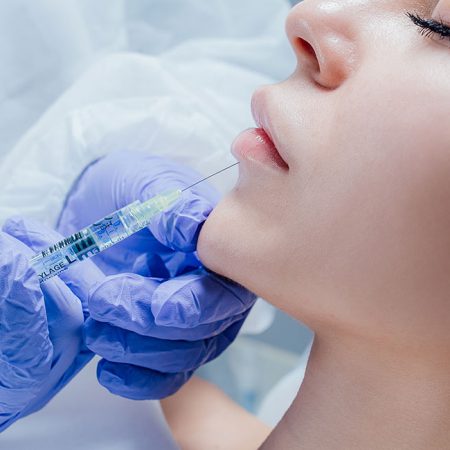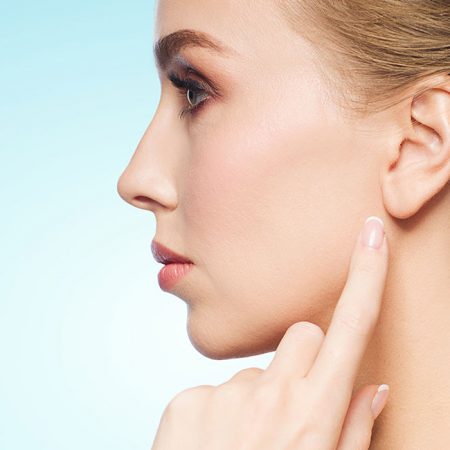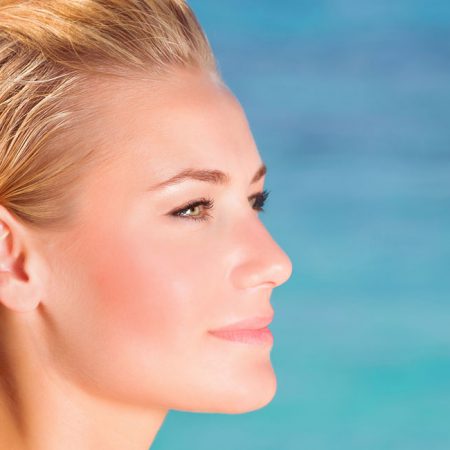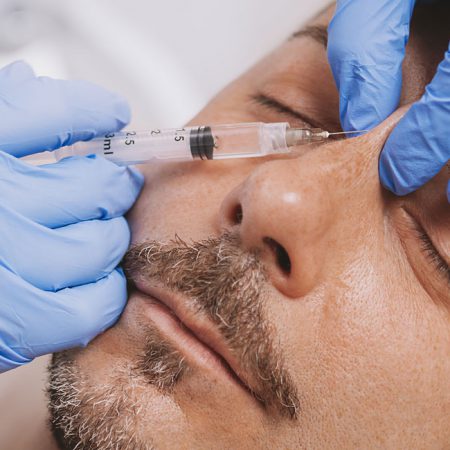For facial wrinkles and skin lesions (age spots or sun damage), a laser can be used to tighten wrinkles and remove age spots. A laser face lift involves using laser techniques, similar to dermabrasion and chemical peel techniques, to tighten wrinkles, which can be targeted to also get rid of age spots. The laser also works to firms up the matrix of collagen beneath the skin to diminish the appearance of unwanted wrinkles. However, this technique is not as strongly effective for wrinkles as a surgical face lift, so some patients desiring more definitive wrinkle treatment may still opt for the traditional face lift along with laser wrinkle treatment for better results.
A laser face lift procedure is nonsurgical. It uses laser light to resurface the outermost layers of the skin so that fine lines and wrinkles are reduced. It works well for areas such as the forehead, under the eyes and around the mouth, which are areas especially sensitive and react well to laser procedures.
The major advantages of the laser face lift and laser skin lesion removal techniques is the fact that it does not require general anesthesia, and the entire procedure involves very little pain. There is no bleeding, and on most occasions, there will be no scarring. Recovery time is also much faster than the standard face lift.
There still are some laser face lift complications and risks. The skin will be often very sensitive and red in appearance for the first week after the procedure. Also, if you had the traditional surgical face lift along with the skin lesion removal procedure at the same time, there will be an increase in pain during the healing process, with the potential for swelling and bruising of the face. For either type of procedure on the face, you need to avoid sun exposure for at least six months after the procedure and you need to follow all postoperative instructions to reduce complications and achieve full desired effect of the procedures.
The best candidates for laser face lift and lesion removal are those with sun damage or age spots, along with wrinkles around the forehead and the eyes. Those with fair, light-pigmented and non-oily skin will have the best benefit from these procedures. Dark pigmented individuals or those with acne or infection risks may not be as good of a candidate for the laser procedures. Your doctor will examine your skin to determine the best treatment for the optimal outcomes for you and your skin type.
